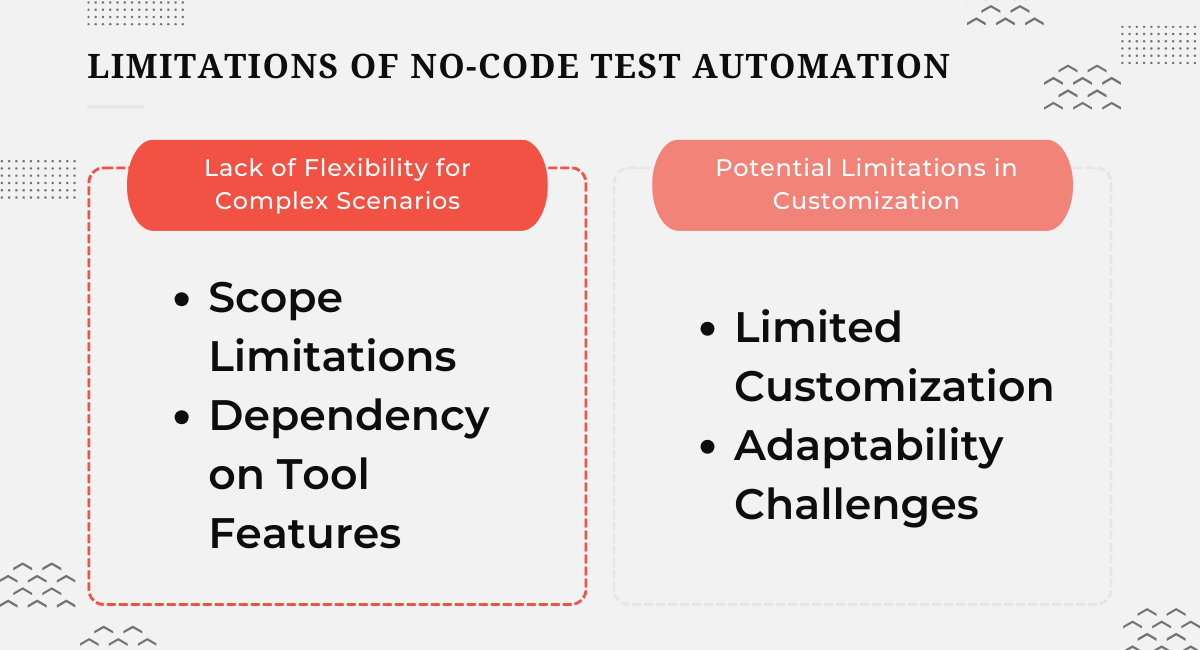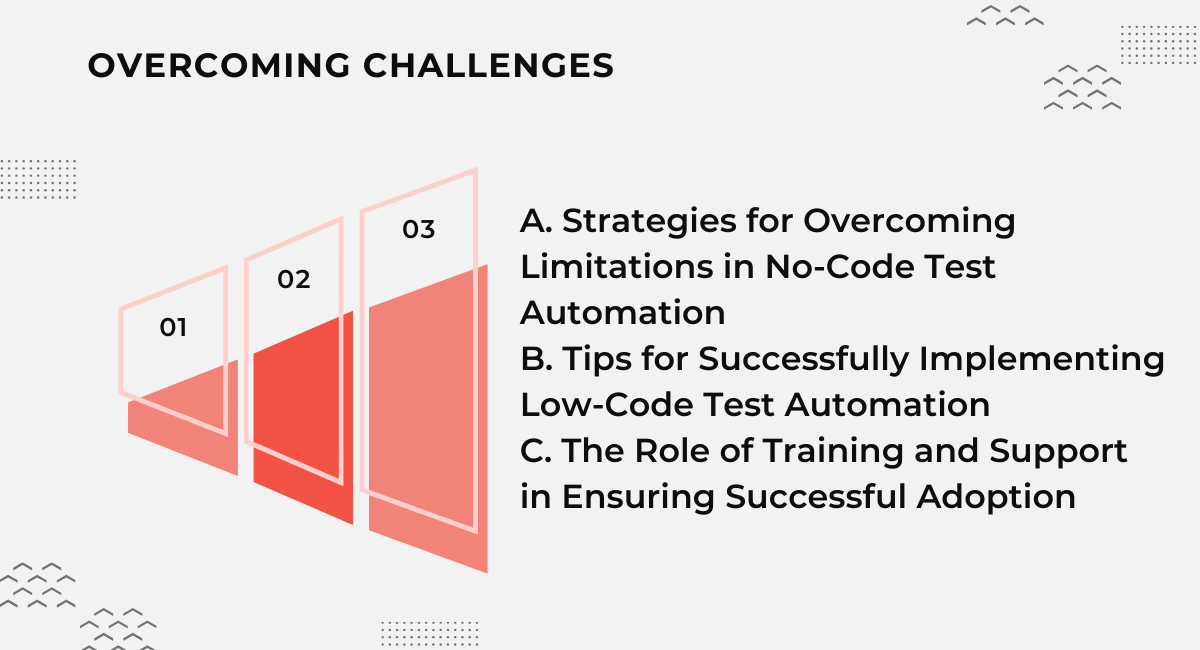Software testing is a crucial phase in the software development lifecycle (SDLC) that aims to identify and fix defects or errors in a software product. It involves the execution of a program or system with the intent of finding bugs and ensuring that the software behaves as expected. Effective testing is essential to deliver a high-quality and reliable product to end-users. Read this article on codeless automated testing and how you can automate testing without Coding.
Understanding Traditional Test Automation
The Role of Coding in Traditional Test Automation
In traditional test automation, Coding plays a pivotal role in creating, maintaining, and executing test scripts. Testers or test automation engineers use programming languages such as Java, Python, or C# to write scripts that simulate user interactions with the software. This coding-centric approach provides a high level of flexibility and customization in designing test scenarios.
Challenges Associated with Coding in Test Automation
Skill Barriers: Test automation typically requires specialized coding skills, limiting participation to developers or testers with programming expertise.
Time-Consuming: Coding-intensive automation can be time-consuming, especially for complex scenarios, slowing down the testing process.
Maintenance Challenges: Changes in the application's codebase may necessitate frequent updates to test scripts, leading to maintenance challenges.
The Need for Alternatives to Coding in Test Automation
Broadening Participation: As testing becomes a collaborative effort, involving individuals with diverse skills is essential—alternatives to coding open up automation to a broader audience.
Accelerating Automation Adoption: Non-developers can contribute to automation efforts without undergoing extensive coding training, accelerating the adoption of automated testing.
Enhancing Agility: In fast-paced development environments, reducing reliance on Coding allows teams to adapt and modify tests to meet evolving requirements quickly.
No-code and Low-Code Test Automation | Codeless Automated Testing
What is No-Code Test Automation?
No-code test automation refers to the practice of automating testing processes without the need for manual Coding or scripting. It empowers individuals with little to no programming background to create and execute automated tests. Key characteristics include:
- Visual Interfaces: No-code tools typically offer user-friendly, drag-and-drop interfaces for designing test scenarios.
- Simplified Workflow: The emphasis is on simplicity, allowing users to define test cases through intuitive visual representations rather than writing code.
Examples of Popular No-Code Automation Tools
- ContextQA: ContextQA is a no-code automation platform that enables users to create and execute tests through a visual interface, making it accessible to non-programmers.
- TestProject: TestProject provides a no-code automation framework with features like recording and playback, making test creation and execution straightforward.
Exploring Low-Code Test Automation
Low-code test automation strikes a balance between traditional Coding and no-code approaches. It involves minimal Coding or scripting, making it accessible to individuals with basic programming knowledge. Key features include:
- Simplified Scripting: While some coding may be applied, it is usually at a higher abstraction level, making it easier for users with limited coding skills.
- Visual Components: Low-code tools often incorporate visual elements to streamline the creation and understanding of automated test scripts.
Examples of Low-Code Automation Tool
- ContextQA: ContextQA is a low-code automation tool built on top of Selenium. It provides a user-friendly interface for creating and managing automated test cases.
- Appium (with low-code frameworks): Appium, commonly used for mobile testing, can be combined with low-code frameworks to simplify the creation of automated tests for mobile applications.
Pros and Cons of No-Code and Low-Code Test Automation
Advantages of No-Code Test Automation

Accessibility for Non-Developers
- Inclusivity: No-code tools empower individuals with little to no coding experience to actively contribute to the testing process.
- Collaboration: Non-developers, such as business analysts or product managers, can participate in test automation, fostering collaboration across different teams.
Faster Test Script Creation
- Rapid Development: No-code tools often feature intuitive interfaces, enabling the creation of automated tests at a faster pace.
- Reduced Learning Curve: The absence of coding requirements minimizes the time needed for individuals to become proficient in creating automated tests.
Limitations of No-Code Test Automation

Lack of Flexibility for Complex Scenarios
- Scope Limitations: No-code tools may struggle to handle complex test scenarios, limiting their applicability for certain types of testing.
- Dependency on Tool Features: Users might be constrained by the features provided by the no-code tool, restricting their ability to address intricate testing requirements.
Potential Limitations in Customization
- Limited Customization: No-code tools may offer less customization compared to Coding, potentially hindering the creation of highly specialized test scenarios.
- Adaptability Challenges: Changes in testing requirements might be challenging to accommodate without the flexibility provided by Coding.
Advantages and Disadvantages of Low-Code Test Automation
Balancing Flexibility and Ease of Use
- Moderate Coding Involvement: Low-code strikes a balance by involving minimal Coding, allowing for more flexibility than no-code solutions.
- Accessible to Diverse Skill Sets: While requiring some coding, it remains accessible to individuals with basic programming knowledge.
Addressing the Learning Curve
- Learning Curve: Low-code solutions may have a steeper learning curve than no-code tools but are generally more approachable than traditional Coding.
- Adaptability: Users can gradually transition from low-code to more sophisticated Coding as their skills develop.
Use Cases and Scenarios
Industries Benefiting from No-Code and Low-Code Test Automation
Finance and Banking: No-code and low-code testing is beneficial for ensuring the reliability and security of financial applications without requiring extensive coding skills.
Healthcare: In the healthcare sector, where compliance and accuracy are critical, no-code and low-code tools simplify the testing process for medical software applications.
E-commerce: Rapid changes in the e-commerce landscape demand efficient testing. No-code and low-code solutions allow teams to adapt quickly to evolving requirements.
Education Technology: Testing educational platforms and applications can be streamlined with no-code and low-code tools, facilitating collaboration between educators and developers.
Real-World Examples of Successful Implementation
Salesforce Testing with TestCraft: TestCraft, a no-code testing platform, has been successfully utilized to automate Salesforce testing. Business analysts and administrators can contribute to test automation without Coding.
ContextQA in Retail Automation: Retail industries have employed ContextQA, a low-code testing tool, to automate tests for web and mobile applications, ensuring a seamless online shopping experience.
Healthcare Systems Testing with Leapwork: Leapwork, a no-code automation tool, has found applications in the healthcare sector for testing electronic health record (EHR) systems, simplifying compliance testing.
Appium for Mobile App Testing: While Appium is traditionally associated with Coding, the use of low-code frameworks with Appium has made mobile app testing accessible to a broader audience.
Scenarios Where Traditional Coding is Still Preferred
Complex Business Logic: Scenarios involving intricate business logic, complex algorithms, or highly customized test scenarios may still require traditional Coding for precision.
Custom Framework Requirements: Projects with specific framework requirements or those demanding highly customized test frameworks may benefit from the flexibility that standard Coding provides.
Performance and Load Testing: Performance testing, especially for large-scale applications, often involves complex scenarios and extensive data manipulation, making standard Coding more suitable.
Security Testing: Security testing requires a deep understanding of vulnerabilities and intricate test cases, often necessitating traditional coding skills for thorough assessments.
Overcoming Challenges

Strategies for Overcoming Limitations in No-Code Test Automation
Gradual Transition: Introduce no-code test automation gradually, starting with more straightforward test cases. As teams gain confidence, they can explore more complex scenarios using additional features or traditional Coding.
Collaboration with Developers: Foster collaboration between non-developers using no-code tools and developers. This ensures that the tools can handle more sophisticated scenarios, leveraging the expertise of both groups.
Continuous Tool Evaluation: Regularly evaluate and update the no-code tools in use. As tools evolve, they may address previous limitations, providing enhanced capabilities for a broader range of test scenarios.
Tips for Successfully Implementing Low-Code Test Automation
Clear Documentation: Provide comprehensive documentation for low-code test scripts. Clear documentation aids in knowledge transfer and ensures that team members can understand and maintain the automated tests.
Training Programs: Conduct training programs for team members transitioning to low-code automation. This ensures that they have the necessary skills to utilize the tool effectively and navigate any coding components.
Regular Code Reviews: For the coding elements within low-code scripts, implement regular code reviews. This ensures adherence to best practices, enhances script quality and facilitates knowledge sharing among team members.
The Role of Training and Support in Ensuring Successful Adoption
Comprehensive Training Programs: Implement comprehensive training programs for individuals using no-code and low-code tools. Training should cover tool functionalities, best practices, and real-world application scenarios.
Ongoing Support: Provide ongoing support for users as they encounter challenges or questions during their adoption of no-code and low-code tools. Quick and responsive support minimizes roadblocks and encourages confidence in tool usage.
Knowledge-Sharing Sessions: Organize knowledge-sharing sessions where team members can discuss their experiences, share tips, and learn from one another. This promotes a collaborative learning environment and accelerates the adoption process.
Future Trends in Test Automation
Emerging Technologies Shaping the Future of Test Automation
Containerization and Orchestration: The use of containerization technologies like Docker and orchestration tools like Kubernetes is becoming integral to test automation. These technologies enhance portability, scalability, and resource management for automated testing environments.
API Testing and Microservices: As organizations increasingly adopt a microservices architecture, API testing becomes crucial. Future trends involve more advanced tools and frameworks for seamless API testing and validation of microservices interactions.
The Evolving Landscape of No-Code and Low-Code Solutions
Increased Adoption in Enterprise Settings: No-code and low-code test automation solutions are expected to see increased adoption in enterprise settings as organizations recognize the value of empowering non-developers to participate actively in the testing process.
Enhanced Feature Sets: The evolution of no-code tools will likely include more advanced features, addressing previous limitations and allowing for broader applications, including complex test scenarios.
Integration with Artificial Intelligence and Machine Learning
AI-Driven Test Automation: The integration of artificial intelligence (AI) and machine learning (ML) in test automation is expected to grow. AI algorithms can assist in test case generation, predictive analysis, and self-healing tests, improving the efficiency and effectiveness of automation.
Smart Test Maintenance: AI and ML will play a role in intelligent test maintenance, automatically adapting test scripts to changes in the application's codebase. This reduces the manual effort required for script maintenance and increases overall testing agility.
Predictive Analytics for Testing: Predictive analytics powered by AI will aid in identifying high-risk areas in applications, enabling teams to prioritize testing efforts and focus on critical areas that are more prone to defects.
No-code and Low-code solutions
The integration of cutting-edge technologies marks the future of test automation, the maturation of no-code and low-code solutions, and the synergy between test automation and artificial intelligence.
Staying abreast of these trends is essential for testing teams and organizations looking to optimize their testing processes, improve efficiency, and deliver high-quality software products in an increasingly dynamic and competitive landscape.
You may also be interested in: Software Testing Guide to Quality
Book a Demo and experience ContextQA testing tool in action with a complimentary, no-obligation session tailored to your business needs.
We make it easy to get started with the ContextQA tool: Start Free Trial.
